In 1939, an article in the New York Herald Tribune talked about a dish unfamiliar to most Americans: pizza pie, which, the writer added helpfully, was pronounced “peet-za.” A decade later, American soldiers who had served in southern Italy during World War II brought home a taste for pizza, as well as the herb that defined the flavor of its zesty and woody tomato sauce topping — oregano.
Oregano, which was largely absent from American cooking before the war, is now one of the most popular herbs in the US (and globally). As Italian food conquered the palates of chefs and their patrons, oregano became a staple of home kitchens, with Americans now consuming over 14 million pounds of the herb annually.
Like many herbs, oregano doesn’t just add flavor to your cooking; it also provides many powerful health benefits. In this article, we’ll explore all things oregano. What is it, and where does it come from? What makes oregano so good for you? What are the differences between fresh and dried oregano? And most importantly, what are the best ways to include oregano in your diet?
What Is Oregano?
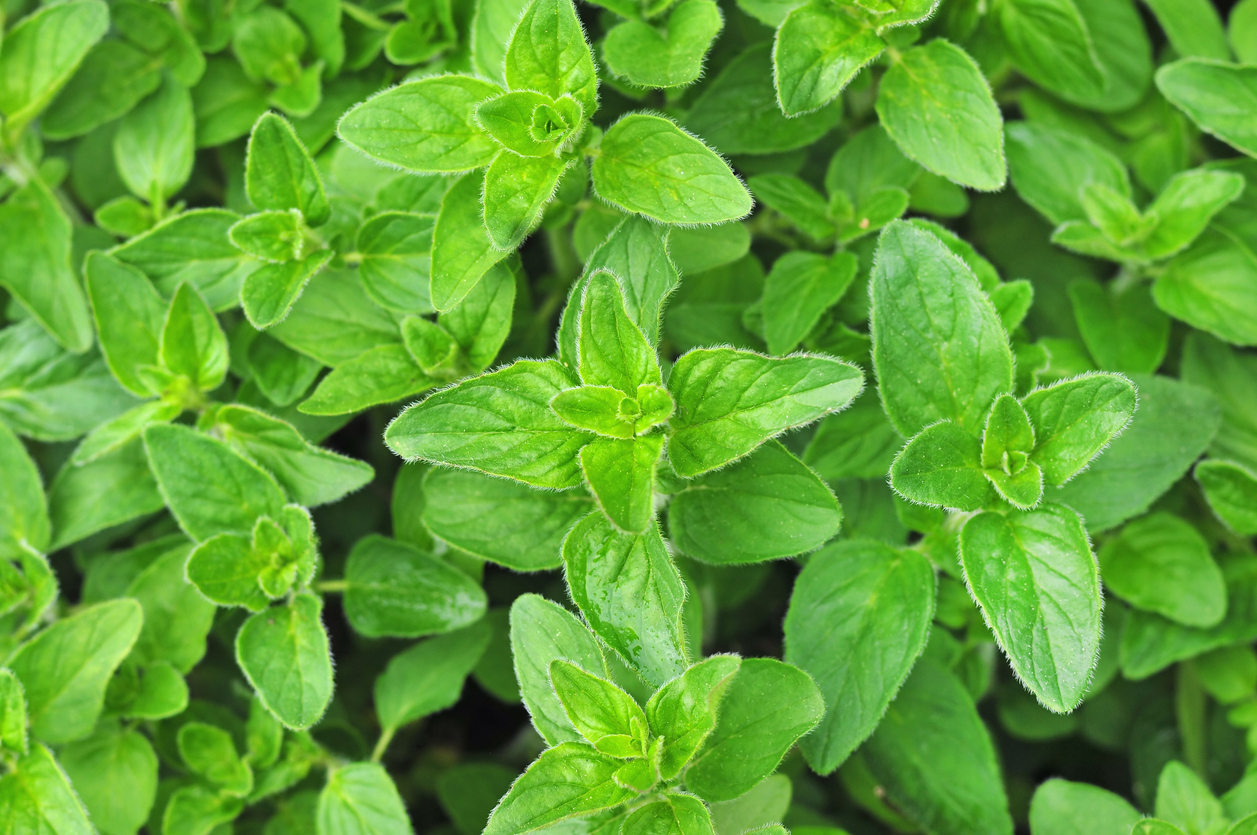
When cooks talk about oregano, they’re referring to fresh or dried leaves of the oregano plant (Origanum vulgare, if you want to show off or find time traveling to ancient Rome), a woody shrub native to the Mediterranean. Oregano is a member of the mint family (although I don’t recommend adding it to iced tea) and grows well in most temperate regions of the Northern Hemisphere.
One cool thing about oregano that I didn’t know until researching this article is the etymology of its name. The word oregano comes from two Greek words, oros (mountain) and ganos (brightness or joy). So that gives you a clue about where oregano likes to grow — on mountainsides that get full sun. In colder zones, you can grow oregano as an annual. If your winters are mild, it might succeed as a perennial.
Oregano is a staple flavoring in Italian food, specifically the Mediterranean cuisine of southern Italy. And the plant-based versions of this style of eating are among the healthiest widely-practiced dietary patterns in the world. In fact, two of the Blue Zones (regions where humans live the longest and healthiest lives) — Ikaria, Greece, and Sardinia, Italy — are Mediterranean.
Oregano Nutrition
Like other leafy green herbs, oregano is high in vitamin K1. It also contains small quantities of other vitamins and minerals, including vitamins A, C, and E; B vitamins like B6 and folate; and minerals such as calcium, iron, and potassium.
Also like all leafy greens, fresh oregano contains chlorophyll, which when combined with getting your sunlight on a regular basis, can help naturally regenerate the fat-soluble compound CoQ10. This important compound supports cell growth and energy production, as well as protecting cells from damage.
Terpenes in Oregano
Like many strong-smelling and tasting plants, oregano has pungent leaves largely to protect them from being munched on by critters such as aphids and mites, or becoming colonized by fungal diseases. The chemicals that produce these strong aromas and flavors are called terpenes, and are common to many of the plants we use for essential oils.
Oregano essential oil, which comes from fresh leaves and stems, is a major source of some very potent terpenes. The two major terpenes that make up this essential oil are carvacrol and thymol, which together pack quite a healthy punch. Studies show they have antimicrobial, anti-inflammatory, antioxidant, and antitumor properties.
In case you’re wondering how a chemical produced by a plant specifically to discourage predation can be good for us, it’s probably an example of hormesis. This term refers to the phenomenon that things that can be harmful in big doses can be beneficial in small ones. In this case, it’s theorized that the compounds in oregano that may slightly stress our bodies also stimulate them to engage in healthy maintenance and repair.
Oregano Health Benefits
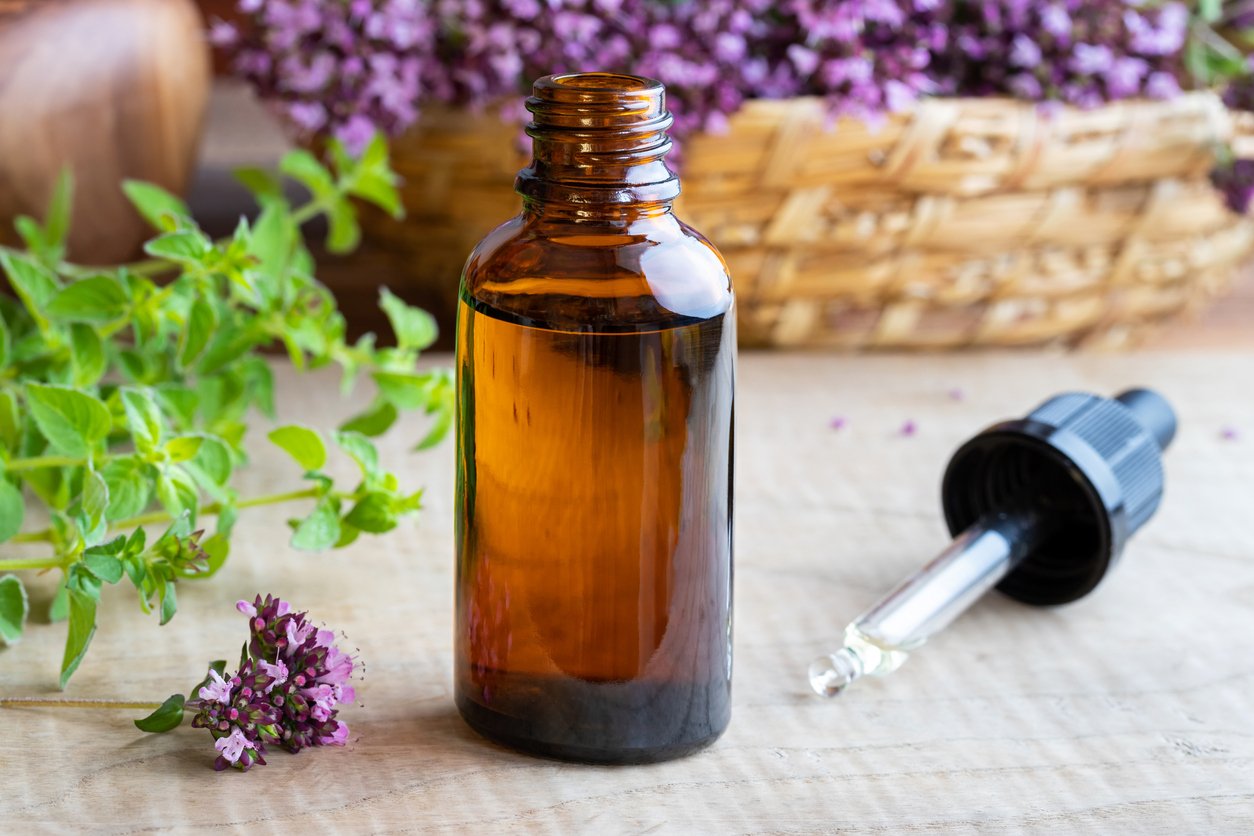
Oregano can confer significant health benefits. Historically it’s been used both as a culinary and medicinal herb, thanks to its support for the immune system and ability to protect against a wide variety of ailments.
However, almost all the research on the medicinal properties of oregano has looked at essential oil or extracts of oregano, and not the fresh or dried herb you can find in supermarkets. So I want to be clear that while culinary uses of oregano almost certainly provide health benefits, that’s largely an assumption based on its traditional usage and from studies using its more concentrated forms.
My suggestion is to use oregano because you love how it makes your food taste, knowing that it might also have some really cool health benefits. And if you have a condition that could be treatable with oregano oil or extract, ask your healthcare professional about it before using it.
Is Oregano Antiviral?
A 2014 study found that carvacrol, one of the terpenes found in oregano, was highly effective in reducing infectiousness of a human norovirus in lab-grown cell cultures. And in 2020, a team of researchers from Florida discovered that carvacrol could inhibit the HIV virus from entering healthy cells. So it seems that oregano essential oil has antiviral properties.
Does Oregano Kill Parasites?
Cryptosporidium is a highly infectious parasite that lives in the intestines of humans and animals and can be transmitted through drinking water, swimming pools, and hot tubs. Exposure can lead to persistent diarrhea, something we see commonly in children in impoverished settings. Both oregano essential oil and pure carvacrol extracted from oregano have been shown to inhibit the infectivity of cryptosporidium in test tubes. The authors of a 2018 study suggest that oregano oil could be an effective oral treatment for infected children.
Another dangerous parasite is toxoplasma gondii, which can travel through cat litter and cause toxoplasmosis, which can lead to severe developmental disabilities in unborn babies whose mothers are exposed. It’s a big problem because even the most effective medical treatments have high failure rates, and none appear to work on the infection in asymptomatic individuals. Again, carvacrol may come to the rescue here; an in vitro study from 2021 showed that carvacrol stopped toxoplasma gondii from proliferating by changing its shape and inhibiting its ability to move.
Oregano Antibacterial Properties
Continuing on our theme of “Oregano oil protects us from tiny nasty things,” researchers have also discovered that oregano oil can keep harmful bacteria from messing up your digestive tract, lungs, and skin. And oregano oil also may contribute a solution to one of the big problems in modern medicine and public health: multidrug-resistant bacteria.
That is, the widespread use (some would say overuse) of antibiotics, both in clinical settings and in industrial animal agriculture, has led to the development of microbes that can somehow survive exposure to these drugs. A 2018 study found that oregano oil was able to inactivate some multidrug-resistant bacteria, both in lab cultures and in third-degree burn wounds.
One bacterial infection, in particular, has proven itself resistant to antibiotic therapies in a sizable segment of sufferers: Lyme disease. Up to 20% of patients who complete the standard antibiotic treatment for Lyme disease still live with chronic symptoms, sometimes for decades. One theory is that some Lyme bacteria evade or resist the drugs, and are able to stay in the body and cause trouble.
A 2017 study published in Frontiers in Medicine found evidence that several herb-based essential oils, including oregano oil, killed the Lyme bacteria more effectively than current antibiotics. The authors wrote that the three most effective essential oils, those of oregano, cinnamon bark, and clove bud, “…completely eradicated all viable cells without any regrowth in subculture in fresh medium.” Pretty impressive, even for a leafy green.
Is Oregano an Antioxidant?
While oregano itself is not an antioxidant, it does have antioxidant properties. Lab studies conducted in 2016 and 2017 quantified significant antioxidant activity in oregano whose active ingredients were extracted into ethanol. And a 2017 study out of China found that oils taken from oregano leaves and flowers were more potent antioxidants than those from the stems or roots.
Oregano and Cancer
Many studies have found that carvacrol and thymol are capable of thwarting the progression of cancer. They do so via several mechanisms, including induced apoptosis (reminding the damaged cancer cells that they should die for the good of the entire organism), cytotoxicity (being poisonous to cancerous cells), cell cycle arrest (keeping them from duplicating themselves), preventing metastasis, and inhibiting signaling pathways like mTOR from instructing tumors to form.
Cooking with Fresh vs Dried Oregano
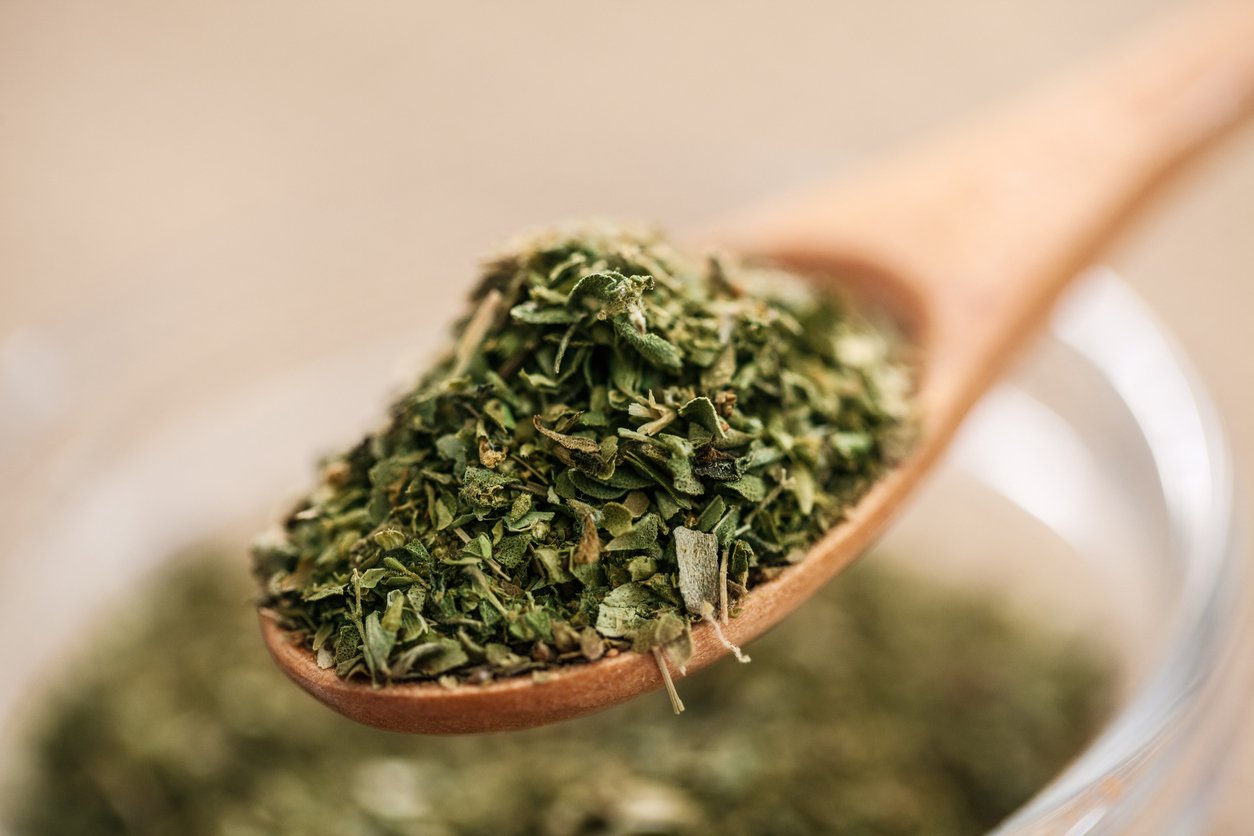
OK, time for a sharp U-turn, as we shift from lab studies of the medicinal uses of oregano oils and extracts — to good old oregano in the kitchen. After all, even if you choose not to use oregano medicinally, you can still enjoy cooking with oregano, and still get some health benefits in the bargain.
A perennial question when it comes to herbs and spices: should you use fresh or dried? The answer is: Yes.
Dried herbs are more concentrated and potent, and so will provide a more intense flavor to dishes. A chef’s rule of thumb is that if you need to substitute fresh herbs or spices for dried, triple the amount. So if your recipe calls for one teaspoon of dried oregano, you can substitute one tablespoon of fresh oregano leaves.
On the other hand, dried oregano may not have as many nutrients as fresh. Vitamin A is destroyed by exposure to light, and vitamin C is destroyed by heat, which may be used during commercial processing. (If you have access to a decent quantity of fresh oregano, you can air dry it yourself and keep it away from light and heat in the process. Check out our comprehensive guide to dehydrating food for details.)
One compound that will probably degrade no matter how you dehydrate your oregano is chlorophyll. And while you may have learned in biology class that only plants can photosynthesize, it now appears that humans can also participate in this amazing process by eating leafy greens and spending time in sunlight. For this reason, fresh oregano may be healthier overall than dried.
So my solution to this quandary is to use both, if possible. Since dried oregano has a stronger taste, you can add it early on in cooking, so its flavor can permeate the dish. And add fresh oregano at the end of cooking to preserve its nutrients and flavor.
How to Use Oregano in Recipes
Fresh oregano works well as a garnish for cooked dishes like pasta, on pizza, or blended into things like soups, stews, and sauces.
Dried oregano is much more versatile. Here are just a few ideas to get you started:
- Use it as a seasoning for Italian and other Mediterranean dishes like plant-based pizza, pasta, dried nuts, etc.
- Include it in salad dressings and marinades.
- Sprinkle it over salads, grain bowls, beans, and scrambles.
- It’s also great on oven fries, with garlic powder and nutritional yeast.
- Bake it into savory whole grain breads.
- Make oregano tea (you can also use fresh leaves for this).
Oregano Recipes
Oregano’s flavor is thought to be earthy, slightly peppery, and sweet with a hint of mint (it is a part of the mint family after all) that complements the flavors of a wide variety of vegetables and plant-based proteins. The robust flavors of oregano are wonderful when used fresh or dried and are a delight in these tasty recipes!
1. Soothing Chickpea Soup with Fresh Thyme and Oregano
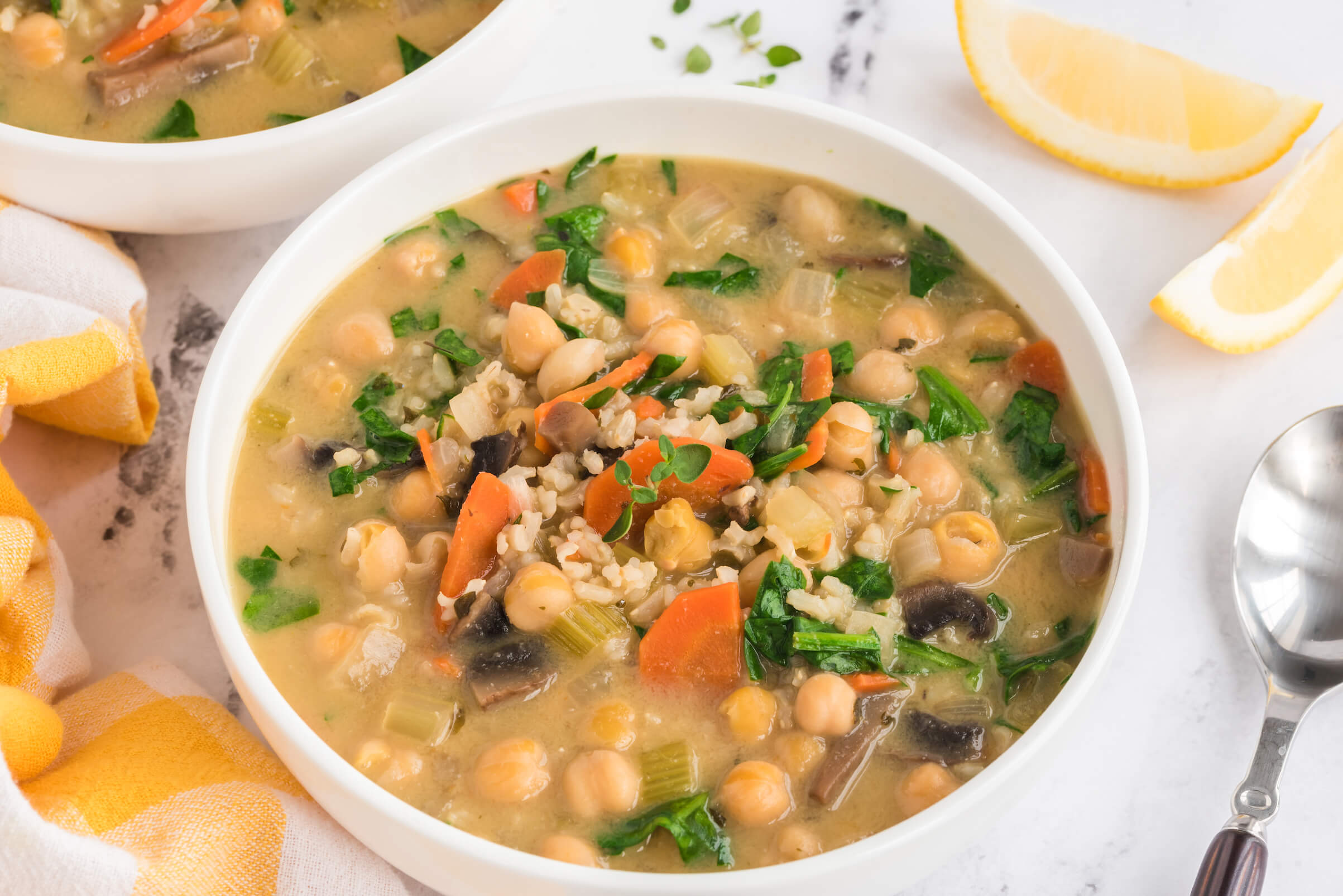
Soothing Chickpea Soup with Fresh Thyme and Oregano is a warm bowl of nourishing comfort that is perfect for a cozy evening curled up at home. Creamy, herby, and full of phytonutrient-rich veggies, this soup couldn’t be more satisfying! With the fresh thyme and oregano imparting their concentrated earthy flavors into the chickpeas and rice, you’ll really get to experience the robust flavoring that oregano has to offer. If you love the earthiness this herb brings, sprinkle a bit more fresh oregano on top right before you serve it and enjoy!
2. Vegan Feta
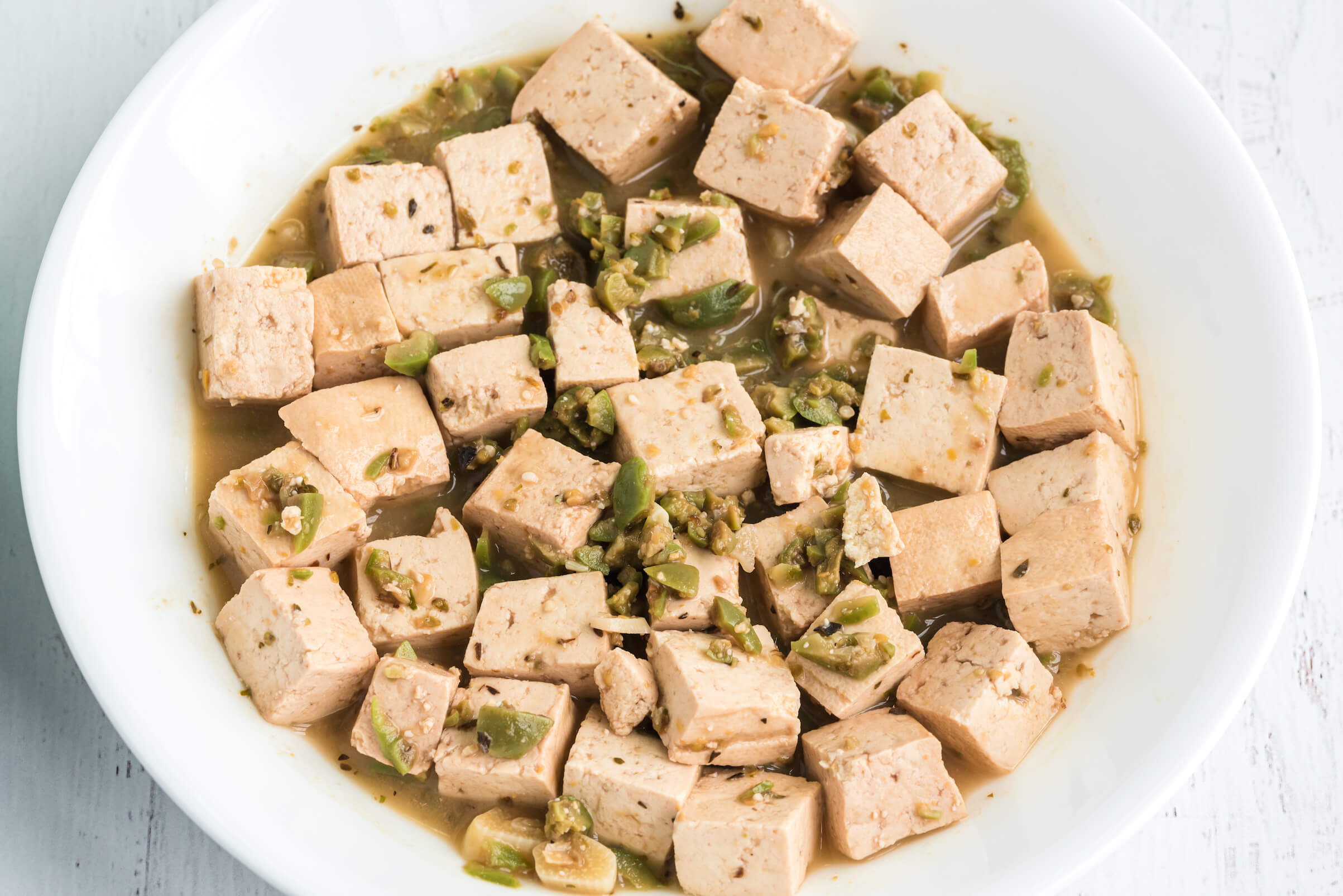
Protein-rich tofu is the perfect base to recreate the texture and flavor of traditional feta with the help of a delicious and herb-centric marinade. Dried oregano, lemon juice, red wine vinegar, pure maple syrup and green olives transform the tofu into a slightly briny, earthy, and sour cheese that hits all the right notes. Give our mouthwateringly nutritious Vegan Feta a try, and let us know what you think!
3. Lemon Za’atar Crispy Chickpeas
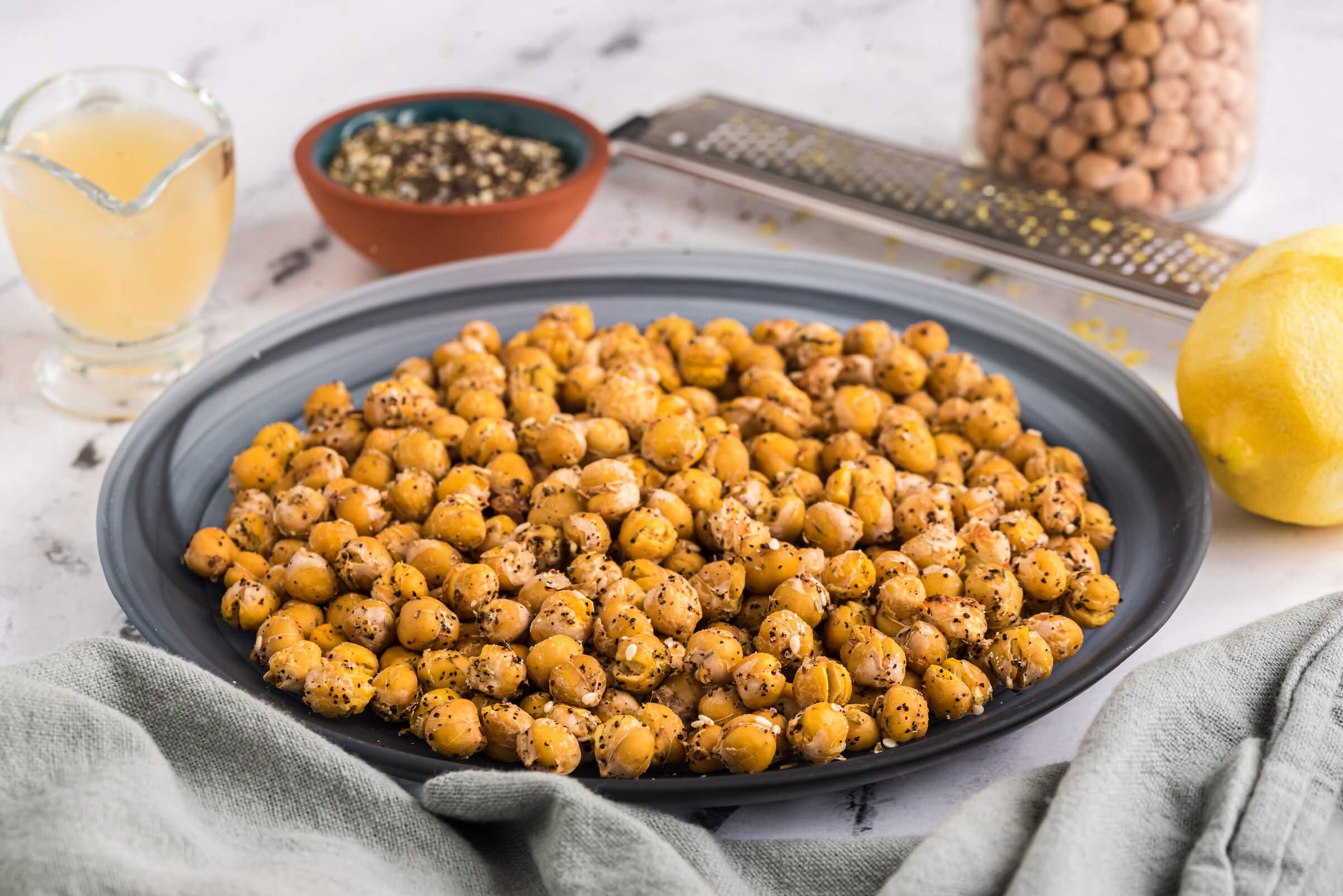
Za’atar is a bright, earthy, herby, and toasty seasoning blend that brings together simple herbs and spices — dried oregano, thyme, marjoram, sumac — with toasted sesame seeds to create a dynamic flavor experience that doesn’t disappoint. Once this woody (thanks to our friend, oregano), tangy, and nutty blend is mixed with zesty lemon and chickpeas and then baked, you get crunchy, cravable, and healthy nibbles that are fantastic as a snack or an accent to a meal.
Get to Know Oregano!
As a leafy green herb, oregano is good for you for a multitude of reasons, including its nutrient profile, chlorophyl content, and terpenes. Research on oregano essential oil and extracts has shown it could help your immune system protect you from a variety of microbial infections, as well as even potentially fight cancer. Although mainly studied in the form of extracts, these benefits likely come from the whole herb, too.
You can use fresh or dried oregano in cooking and baking, although fresh may be more beneficial for your health. How you use oregano in your kitchen comes down to preference and, ultimately, what a recipe calls for. Experiment with both fresh and dried oregano and get familiar with this potent functional food.
Tell us in the comments:
- What are your favorite uses of oregano?
- Do you remember the first time you ate Italian food? What was the dish, and what was it like?
- Which oregano recipe will you try next?
Featured Image: iStock.com/marrakeshh


